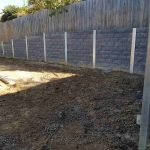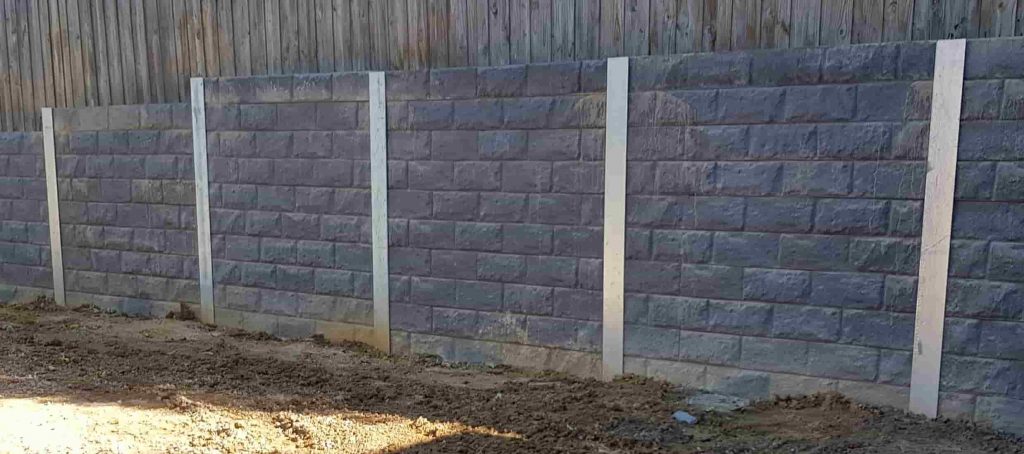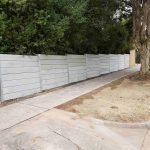Introduction
Building a retaining wall isn't just about stacking stones or pouring concrete; it's a complicated procedure steeped in science and engineering. Keeping walls are vital structures that hold back soil, avoiding disintegration and permitting the production of functional arrive on slopes. Whether you're wanting to set up a garden feature, produce more space for landscaping, or avoid soil movement in locations susceptible to shifts, understanding the complexities behind strong and durable retaining walls is essential. This article will delve into various elements of retaining walls, using insights from expert professionals who focus on this field.
The Science Behind Strong and Resilient Retaining Walls by Specialist Contractors
When we discuss the science behind maintaining walls, we're diving deep into materials, design principles, and structural stability. Maintaining walls can be made from numerous products such as concrete sleepers, lumber sleepers, stone, and even H beams. Each material provides special advantages and difficulties that require to be comprehended for ideal performance.
Understanding Soil Mechanics
Soil mechanics is the foundation of any keeping wall building. The wall should withstand the lateral pressure put in by the soil it keeps back. This pressure differs based on a number of factors:

- Soil type: Clay, sand, silt-- all these types act differently under stress. Moisture content: Water increases soil weight and can cause instability. Height of the wall: Taller walls require more robust assistance mechanisms.
The Function of Drain in Retaining Walls
One essential aspect frequently neglected is drain. Water accumulation behind a wall can result in increased pressure that might compromise its stability.
Weep holes: These allow water to escape. Drainage pipes: Installed at the base to channel water away. Gravel backfill: Promotes drain while supplying stability.Types of Retaining Walls
Understanding various types of retaining walls is important for selecting the best one for your project.
Gravity Walls
Gravity walls depend on their own weight to resist soil pressure. They are generally made from heavy materials like stone or concrete.
Pros & Cons
- Pros: Easy design; no unique foundation needed. Cons: Limited height; requires considerable area at the base.
Cantilevered Walls
These walls utilize leverage to hold back soil, featuring a horizontal slab that extends into the retained soil.
Pros & Cons
- Pros: More efficient than gravity walls for taller heights; less product needed. Cons: Needs mindful engineering and style calculations.
Sheet Stack Walls
Often used in soft soils where other types might fail, sheet pile walls include interlocking slabs driven into the ground.

Pros & Cons
- Pros: Efficient in tight areas; minimal footprint. Cons: Less steady under high loads; can be expensive.
Choosing Materials for Maintaining Walls
The choice of products considerably affects a wall's resilience and effectiveness.
Concrete Sleepers vs Wood Sleepers
Concrete sleepers are preferred for their strength and longevity compared to wood sleepers which are more aesthetically pleasing but might have a much shorter lifespan due to rot or insect damage.
Comparison Table
|Product|Resilience|Expense|Aesthetic Appeal|Upkeep|| -------------------|------------|----------|-------------------|--------------|| Concrete Sleepers|High|Medium|Low|Low|| Timber Sleepers|Medium|Low|High|High|
Stone as a Material Choice
Stone is another traditional alternative understood for its durability but features higher expenses connected with labor-intensive installation processes.
Design Considerations by Expert Contractors
Expert contractors know that style plays an important function in making sure that keeping walls function effectively gradually.
Height Restrictions
Local building codes often enforce constraints on how high a maintaining wall can be built without needing additional engineering certification.
Bending Moments and Shear Forces
Contractors compute flexing moments (the propensity of a challenge bend) and shear forces (the force acting parallel to an object) when designing retaining walls.
Installation Process Overview
The setup process requires careful planning and execution:

Common Setup Mistakes
It's simple to make errors throughout setup-- here are some common ones:
- Not accounting for drainage Skipping proper compaction of backfill Insufficient reinforcement
FAQ Section
What Are Retaining Wall Installers?
Retaining wall installers are specialized contractors who focus entirely on building these structures with proficiency in numerous products like concrete sleepers or timber sleepers.
How Long Do Retaining Walls Last?
With appropriate installation and maintenance, many maintaining walls can last anywhere from 20 to 100 years depending upon materials used.
Can I Build My Own Keeping Wall?
While do it yourself projects can be fulfilling, it's advisable to speak with an expert specialist if http://johnnyfenceinstallerbusinesszrhj679.theburnward.com/retaining-wall-specialists-key-qualities-for-successful-tasks you're unskilled with structural work; inappropriate installation can lead to costly failures down the line.
What Is Backfill?
Backfill describes the material utilized to complete behind a maintaining wall after building and construction; it usually consists of gravel or crushed stone for ideal drainage.
How Much Does It Cost To Build A Keeping Wall?
Costs vary extensively based upon size, product choice (like concrete versus wood sleeper), labor rates, and place but usually variety from $15-$50 per square foot installed.
Are There Allows Required For Building A Retaining Wall?
Yes! Most towns require permits before building any considerable structure like a maintaining wall due to safety guidelines-- always examine local laws first!
Conclusion
Building strong and resilient retaining walls involves a lot more than simply stacking materials together-- it's a complex mix of science, engineering principles, material selection, design considerations, environmental aspects like moisture levels or soil types being taken into consideration every step along the method! Whether you choose concrete sleepers due to their effectiveness or go with rustic charm with wood sleepers-- partnering up with experienced professionals ensures success through thorough planning integrated with industry knowledge tailored particularly towards your needs! The science behind strong and long lasting keeping walls by professional specialists will not only protect your residential or commercial property however likewise enhance its visual appeal while standing tall versus time itself!